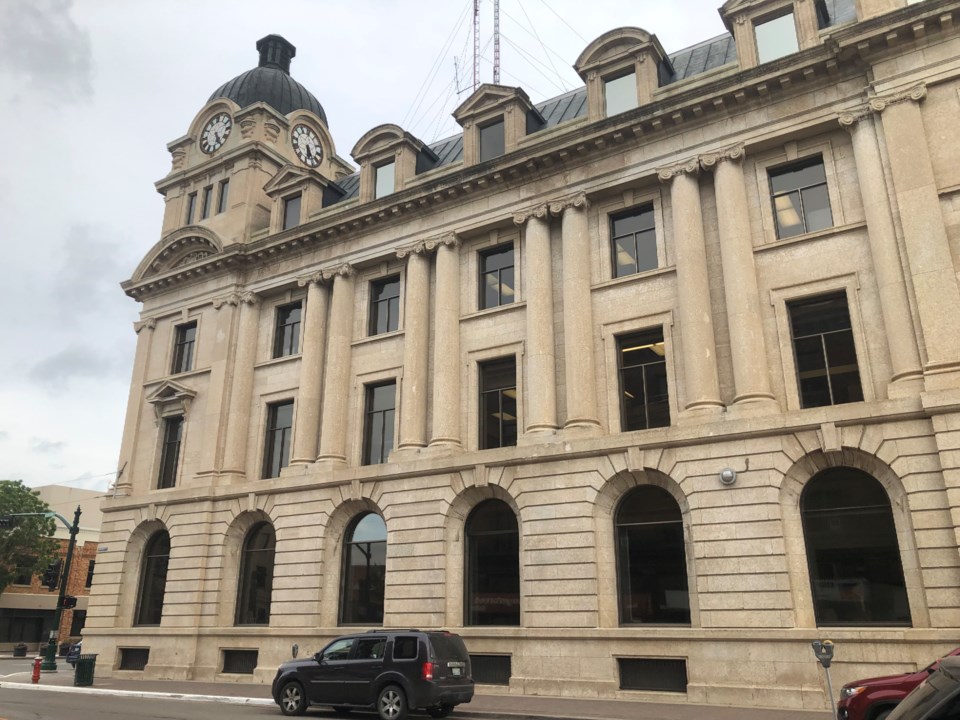Commercial properties will pay three per cent more in taxes this year because city hall is hiking the mill rate factor to compensate for last year’s assessment appeal losses — a move that also increases the tax gap between residential and commercial properties.
In 2021, Moose Jaw saw commercial appeal losses of $24.75 million, which was 3.15 per cent of the total commercial and industrial subclass assessments and translated into $358,704 in lost municipal taxation, finance director Brian Acker explained.
“That $358,000 will be an ongoing (yearly) loss. Certainly, the loss due to agreements to adjust (assessments) is a permanent loss. That’s about $154,000 … ,” Acker said during city council’s May 9 executive committee meeting.
“The remaining $204,000 is subject to appeal. The majority of those have gone to the (Saskatchewan Municipal Board), so we may win those at some point … . As we win appeals, we will reduce that mill rate factor. It’s not like we keep that money.”
Since these losses are ongoing, it is necessary to make up for them, he continued. The city can fund commercial/industrial appeal losses by increasing the mill rate factor to generate the necessary money from those classes so the city can “remain revenue neutral.”
Therefore, this year’s commercial/industrial mill rate factor is 1.4112 times compared to last year’s 1.3681, Acker said.
It is estimated that the commercial appeal losses this year will be 1.7 per cent of overall assessments or $186,469 in lost municipal taxation, he continued. However, there is $856,890 in accumulated surplus to cover those losses, an account council used last year to cover similar appeal losses.
“This method (using accumulated surplus) works well for the annual expected appeal losses for the current year (and) as was done in 2021 but is not well suited for ongoing losses due to assessment appeals,” Acker said.
The other option would be to increase the mill rate on every property class by 1.15 per cent, Acker added. However, that percentage increase would be tacked onto the 5.45-per-cent municipal tax hike council approved last December.
Another issue Acker discussed was the property tax gap.
Since 2017, council has wanted that gap narrowed so residential properties shouldered more of the tax burden. Changes by city hall and the provincial government have allowed this to happen.
Acker pointed out that if a residential property assessed at $200,000 is paying $1,000 in taxes, for example, then a similarly assessed commercial property would pay 2.35 times that amount.
The tax gap in 2018 was 2.35, while the gap last year was 1.88 times. City administration expected that number to shrink to 1.80 his year. However, Acker later said that hiking the commercial mill rate factor will increase the tax gap to 1.87 times.
“In a perfect world, there would be no gap. They would be the same,” he told Coun. Heather Eby.
With both classes sharing the tax increase, residential will see an increase equal to 6.40 per cent and commercial an increase of 3.56 per cent. However, Acker later said commercial properties will pay an extra three per cent — for a total of 6.56 per cent — because of the mill rate factor increase.
“This is always a meaty report. … It makes sense to me,” said Eby.
Council later approved several recommendations for this year’s tax policy.
Council voted unanimously to have city administration set the mill rate factor for Other Agricultural Land and Improvements and Non-Arable Agricultural Land and Improvements at 0.2318 times so they paid the same rate as properties in the RM of Moose Jaw.
Secondly, council wants this year’s municipal tax increase to be shared between residential and commercial property classes by adjusting the mill rate factors in each class.
Thirdly, administration is to adjust the mill rate factor for commercial/industrial property classes to reflect last year’s commercial appeal losses.
Council must approve the recommendations at its May 24 regular meeting before they become official. A mill rate bylaw will also come forward to make the changes official.




